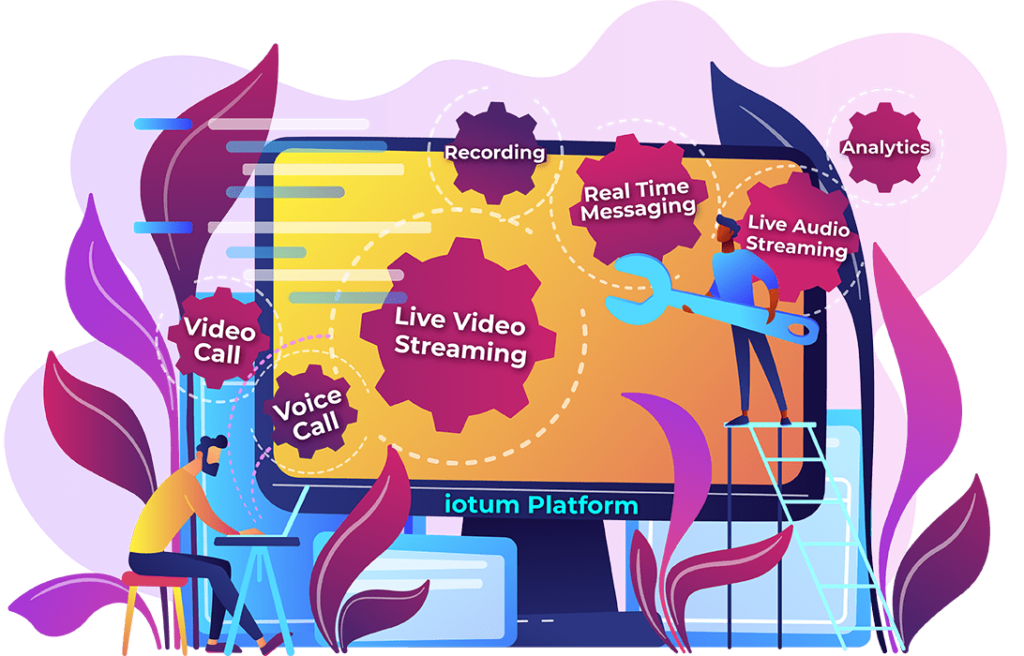 In today’s increasingly demanding reality in healthcare, the convergence of healthcare and technology has given birth to a transformative force in the field: telehealth.
In today’s increasingly demanding reality in healthcare, the convergence of healthcare and technology has given birth to a transformative force in the field: telehealth.
Patients simply demand more convenience, accessibility, and efficiency in getting their healthcare services, creating an immense opportunity for entrepreneurs looking to delve into the burgeoning telehealth market or healthcare professionals looking to improve their healthcare service’s quality and reach.
In this article, we will delve into the realm of telehealth opportunities, providing aspiring entrepreneurs with knowledge and insights to navigate this dynamic telehealth landscape successfully.
We will explore the current telehealth opportunities, the trends and technological innovations shaping the future of telehealth, and how to overcome the challenges and risks associated with the telehealth industry.
So, let us embark on this transformative journey together, and we will provide you with the information you need to start a successful telehealth venture.
Let us begin.
The Current Landscape of Telehealth
The current landscape of telehealth is in a state of rapid evolution. There have been a number of major technological advancements in health and communications technology, and there have also been rapidly increasing demands for more accessible healthcare.
In this section, we’ll take a closer look at the recent trends and developments in the telehealth and healthcare field as a whole.
1. Recent trends and advancements in telehealth technology
Some of the most recent advancements and trends in technology surrounding telehealth include:
- Mobile telehealth: there has been increasing use of mobile devices for telehealth visits, with the proliferation of mobile health apps (mHealth) revolutionizing telehealth access. Mobile telehealth opportunities allow patients to easily schedule appointments, receive personalized reminders and health tips, and even access medical records straight at their fingertips.
- AI and virtual assistants: there have been developments of new telehealth applications that use artificial intelligence (AI) to provide personalized patient interactions, automate administrative tasks, and even provide simple diagnostics and treatment services.
- Integrated telehealth platforms: more robust telemedicine platforms have emerged in recent years, with a strong emphasis on facilitating secure and user-friendly video consultations. These solutions are often integrated with Electronic Health Records (EHRs) to enable real-time data exchange and seamless communication/collaboration providing healthcare professionals with all essential opportunities in telehealth.
- Expansion of telehealth in other areas: while in the past telehealth was mostly used in traditional treatments, now there has been an expansion of opportunities with telehealth into new areas, such as behavioral therapy and mental health services.
- Remote Patient Monitoring:there has been a growing use of telehealth opportunities for monitoring patients’ health data in real time, typically in combination with IoT devices and wearable technologies. This type of telehealth application is often used for monitoring and managing chronic conditions, allowing healthcare providers to manage patients’ health remotely proactively.
2. Adoption rates and acceptance among patients and healthcare providers
In recent years, the adoption rates and acceptance of telehealth among both patients and healthcare providers have also increased in recent years.
In a 2021 Telehealth Survey Report by AMA (American Medical Association), 85% of respondents have reported having used telehealth in the past year, and the majority of healthcare providers are now providing telehealth services.
Throughout the COVID-19 pandemic in 2020-2022, telehealth adoption has surged dramatically. Both patients and healthcare providers experienced giving and receiving virtual consultations and remote healthcare services during the pandemic—many for the very first time—allowing both parties to realize the opportunities of telehealth.
Other important considerations:
- In recent years, an increasing number of healthcare providers have embraced telehealth as an effective and efficient way to extend their reach in providing healthcare services and also in offering continuous care for chronic cases.
- Another study has shown that patients increasingly appreciate the time-saving and convenience as opportunities of telehealth services. This is mainly due to the increased accessibility, reduced/eliminated travel time, and reduced costs.
3. Government policies and regulations impacting telehealth
Changes in existing regulations and the introduction of new policies/regulations are also impacting telehealth in many ways:
United State:
- The CMS (Centers for Medicare and Medicaid Services) has expanded reimbursement to cover telehealth services since the COVID-19 pandemic. This includes coverage for a wider range of healthcare services, such as chronic disease management and mental health care.
- The ONC (Office of the National Coordinator for Health Information Technology) has issued a number of telehealth guidelines documents, including a framework for state and federal telehealth policies.
- The ATA (American Telemedicine Association) has developed a number of resources for both patients and healthcare providers, including a directory of telehealth providers in the US.
European Union:
-
- The European Union has issued a directive on cross-border healthcare, allowing patients to access telehealth services from other EU countries while ensuring data protection.
- The European Commission has developed a roadmap for eHealth and a framework for telehealth policies during the COVID-19 pandemic.
- The ETF (European Telemedicine Forum) has developed a number of resources for telehealth usage, including a directory of telehealth providers in the EU.
Other countries and regions:
- The use of telehealth is growing rapidly in Asia, with developed countries like China, Asia, and South Korea having all implemented regulations and policies to support telehealth usage.
- Canada has a number of regulations and policies in place supporting telehealth usage. This includes data privacy/security regulations and reimbursement policies for telehealth services.
- Australia has also implemented a number of policies and regulations to support the use of telehealth in the region.
As we can see, the current telehealth landscape is witnessing favorable regulatory changes on top of innovative technology advancement. This phenomenon opens up a number of interesting telehealth opportunities, indicating a promising future for telehealth, which we will explore in the next sections.
Telehealth Opportunities in 2024 and Onwards
1. Telemedicine Platforms: Developing User-Friendly Virtual Healthcare Solutions
Developing telemedicine platforms is most likely the most common and lucrative opportunity when looking to start a telehealth venture.
Telemedicine platforms refer to software applications that allow virtual connectivity between patients and healthcare providers. These platforms can be used for a number of applications, including virtual consultations, chronic disease management, mental health treatments, prescription refills, and other opportunities of telehealth.
Key areas of telehealth opportunities in this category include:
- Providing an intuitive user interface: include easy-to-navigate interfaces that are intuitive for patients of all demographics, including seniors, those with mobility issues, and those with limited to no technology literacy.
- Integration of EHRs: integrating Electronic Health Records (EHRs) allows a more centralized and seamless exchange of medical history, patient data, and other relevant information to enhance the quality and continuity of care.
- Video consultation capabilities: you can differentiate your telehealth platform by using high-quality and reliable video streaming API features to enable effective remote consultations with features like screen sharing and text messaging for seamless medical presentations.
- Automated reminders and appointment scheduling: implementing an efficient and reliable appointment booking system and sending automated reminders to improve patient adherence and reduce no-shows.
The competition for launching a telemedicine platform is quite fierce, but there is still room for new players, especially those who can offer unique telehealth opportunities or better services than what’s currently available.
2. Remote Patient Monitoring (RPM): Combining Telehealth with IoT Devices and Wearables
Remote Patient Monitoring, or RPM, is the use of communications technology in combination with sensors, cameras, and other IoT devices/wearables to collect and monitor patient data remotely.
RPM enables continuous and remote monitoring of a patient’s health status and vital signs. Healthcare providers can then use this data to track patients’ treatment progress, identify potential issues, and make adjustments to treatment plans as needed.
Entrepreneurs can try to develop innovative RPM solutions in many different shapes:
- Connected health devices: entrepreneurs may try launching a diverse range of wearables and IoT health devices that track essential health metrics and vital signs like blood pressure, glucose levels, etc.
- AI and data analytics: another opportunity is to leverage data analytics and AI algorithms to analyze the collected data, generating insights for healthcare providers in real time.
- Early warning system: an RPM platform capable of sending automated early warning systems to healthcare providers when there’s any concerning change in patients’ health, allowing for timely interventions.
RPM currently offers a wide range of telehealth opportunities, and there is a lot of opportunity for entrepreneurs to capitalize.
3. Mental Health Telehealth: Addressing the Rising Demand for Online Counseling
It’s no secret that there has been a major surge in mental health awareness in recent years, increasing the demand for mental health support all around the world.
Entrepreneurs can tap into this opportunity by developing new telehealth solutions that focus on mental well-being, including:
- Virtual counseling platforms: for a mental health telehealth platform, it’s critical to maintain patient confidentiality and privacy during the virtual counseling sessions. Highlight data privacy-centered features and HIPAA compliance.
- Digital therapeutic solutions: you can create evidence-based digital therapeutic applications that address specific mental health conditions (depression, anxiety, stress management, etc.)
- Therapist matching service: a unique telehealth opportunity is to create a solution that can match patients with suitable mental health therapists based on their needs and preferences.
- Crisis intervention tools: tools that provide real-time support during mental health emergencies, connecting those in need with helplines or dedicated mental health professionals.
4. Telehealth Targeting Rural Areas: Bridging the Healthcare Gap Through Remote Services
Rural areas are often underserved when it comes to accessing healthcare services due to geographical barriers.
There are potentially lucrative opportunities in bridging this healthcare gap by introducing telehealth opportunities tailored to serving rural communities, including:
- Mobile healthcare units: for example, establishing mobile clinics (i.e., with vans) with telemedicine capabilities to reach underserved and remote areas with limited infrastructure.
- Store-and-forward telehealth: a store-and-forward telehealth solution allows patients in rural areas to send photos, images, test results, or medical data to specialists for consultation and diagnosis.
- Health education: creating telehealth platforms that offer health awareness programs and education to help those in rural areas proactively manage their health.
5. Telehealth for Specialized Medicine: Serving Niched Medical Fields
There are promising telehealth opportunities by catering to niche patient populations, like those with specialized needs.
Examples of these niche telehealth opportunities include:
- Tele-dermatology: providing remote dermatology consultations via telehealth, enabling remote diagnosis of skin-related issues.
- Tele-cardiology: offering virtual cardiology consultations, including remote ECG monitoring and rehabilitation services for those with health conditions.
- Tele-oncology: providing remote consultations and survivorship support for those fighting against cancer
- Tele-neurology: enabling remote neurology consultations and providing neurological care to patients with epilepsy, movement disorders, stroke recovery needs, etc.
6. Telehealth in Chronic Disease Management: Revolutionizing Continuous Care
Various telehealth applications have been proven to be very useful in managing chronic diseases, mainly because telehealth allows healthcare providers to monitor and connect with patients on a regular basis, remotely, and in real time.
There are various telehealth opportunities to provide innovations in long-term care management, including:
- Personalized care plans: launching telehealth platforms capable of providing personalized care plans that integrate medication schedules, exercise routines, diet recommendations, etc., to help provide holistic chronic condition management.
- Remote Patient Monitoring: developing RPM solutions specifically designed to monitor chronic patients’ vital signs, adherence to treatment plans, and health status in general.
- Medication adherence solutions: designing specialized telehealth applications that provide automated medication reminders and refill alerts to support chronic disease patients in adhering to their treatment programs
7. International Telehealth: Exploring Global Expansion Possibilities
The remote nature of telehealth naturally enables entrepreneurs to explore international markets and expand telehealth services worldwide.
Not to mention, there is a rapidly increasing demand for healthcare in developing countries, as well as increased adoption of telehealth in these countries.
Areas of focus to consider include:
- Language and cultural considerations: launch telehealth solutions with multilingual capabilities and culturally sensitive content to expand the solutions’ potential reach.
- Telehealth for medical tourism: a fairly untapped opportunity is to offer telehealth services to support patients seeking medical treatments abroad, which is common for those in developing countries. The telehealth solution can offer pre-travel consultations, help schedule appointments, and provide post-treatment follow-ups.
- Partnerships with international healthcare providers: collaborating with healthcare providers in other countries to facilitate cross-border telehealth services.
Overcoming Challenges and Risks in Telehealth
Despite the various lucrative opportunities of telehealth as a rapidly growing field, it is not without its risks and challenges.
Entrepreneurs venturing into this field must be proactive in addressing these challenges to ensure success and sustainable growth in their telehealth ventures.
Here are some of the key challenges that need to be addressed:
1. Privacy and security concerns
Telehealth services like virtual consultations rely on transmitting and collecting sensitive patient data, so naturally, there are concerns about data security and privacy.
To tackle this issue, telehealth entrepreneurs must implement strong security measures, including but not limited to:
- Data Encryption: implementing robust end-to-end encryption measures to protect sensitive patient data during storage and transit.
- HIPAA compliance: ensuring telehealth video conferencing is compliant with the HIPAA regulations, as well as other relevant data privacy laws and regulations in the respective location.
- Secure access control: employing strict authentication measures like multi-factor authentication to verify the identity of both healthcare providers and patients accessing the telehealth platform.
- Regular security audits: conduct periodic security audits to identify and fix vulnerabilities to prevent security breaches.
2. Addressing regulatory compliance and licensing issues
The healthcare industry, as we know, is heavily regulated, and to further add to the complexity, telehealth is regulated differently in different states, countries, and regions.
Telehealth providers must be aware of the latest changes in regulations that apply to their telehealth service and ensure they are in compliance:
- Addressing licensing requirements: when offering telehealth services across borders, make sure to understand and comply with the licensing regulation in each location.
- Insurance reimbursement policies: insurance reimbursement policies for telehealth services may vary from provider to provider, and navigating this issue can be very complex. Yet, it’s essential to ensure fair compensation for your telehealth service.
- Staying updated: it’s critical to stay up to date with the ever-evolving telemedicine practice guidelines and adjust your business practices accordingly.
3. Internet connectivity and infrastructure challenges
Telehealth services rely on internet bandwidth, or else remote communications between healthcare providers and patients won’t be seamless.
It’s critical for telehealth entrepreneurs to acknowledge the existence of this digital divide in internet access, as well as technological literacy, and explore ways to bridge this gap. This is especially important if you are providing your service to rural and underserved areas.
It’s also important to design your telehealth service in such a way that it can still function smoothly in regions with limited internet connectivity. For example, integrating video conferencing API with adaptive bitrate.
4. Ensuring affordability and accessibility for all demographics
Strive to offer transparent and competitive pricing for your telehealth service so that it is accessible to patients of all economic backgrounds.
Besides competitive pricing, also consider the following:
- Inclusivity for special needs: design the telehealth platform with consideration for individuals with special needs (i.e., those with disabilities) so they can access and navigate your services effectively.
- Addressing language barriers: provide multilingual support, as well as interpreting services to cater to more patients.
- User-friendly interface: make sure your platform is as easy as possible to use for both patients and healthcare providers. Consider the needs of senior patients and patients with limited tech literacy.
Wrapping Up
In the ever-evolving landscape of healthcare, telehealth has rapidly grown as the solution for providing more accessibility and affordability in healthcare.
In this article, we have navigated through the diverse spectrum of telehealth opportunities. As we can see, there is a massive chance for entrepreneurs to find lucrative business opportunities that are not only profitable, but allow them to be an agent of change in revolutionizing modern healthcare delivery.
While the journey into telehealth entrepreneurship may seem challenging at first glance, success is within reach as long as there is the right vision and determination.

